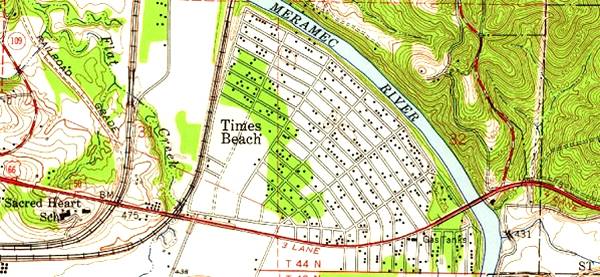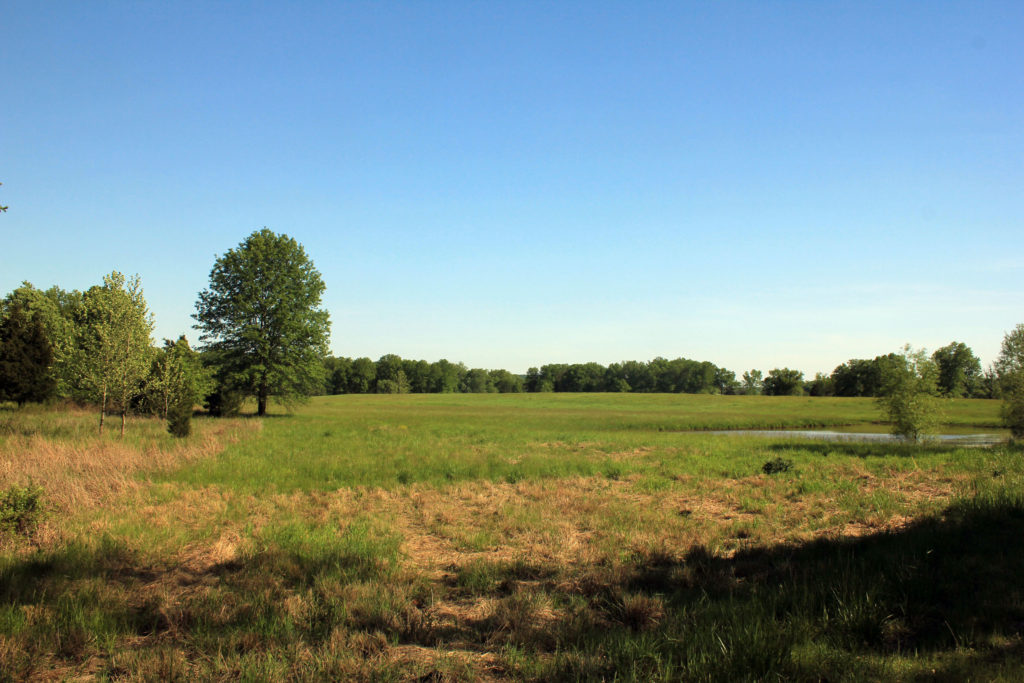Bad news is never welcome. But at Christmastime, bad news is particularly dreadful. On December 23, 1982, the town of Times Beach, Missouri, got the worst kind of bad news: The entire city was contaminated by a highly toxic chemical—dioxin. In a few years, the city was wiped off the map.
Times Beach, Missouri, was designed to be a recreational paradise. The site is just a few miles southeast of St. Louis, along the route of the historic “Route 66.” The St. Louis Times newspaper owned a small tract of land on the shore of the Meramec River, and they decided in 1925, as an advertising gimmick, to sell small lots for a negligible price ($67.50) to new six-month subscribers. Soon after, the new land owners formed the town of Times Beach. It never developed as a major recreational destination, but it did become a modest middle-class town, with 2,500 residents living in about 800 homes.

The town never had much money, so when the dusty roads became an issue, they turned to a low-cost solution. They hired a nearby company to spray used crankcase oil on the roads, a common practice in rural communities. For four years, from 1972 to 1976, the company sprayed the used oil on Times Beach’s roads. Unknown to the town and its residents, however, the company had mixed other industrial waste into the oil. That industrial waste contained one specific chemical in high concentrations—2,3,7,8-tetrachlorodibenzodioxin, also known as TCDD, or simply as “dioxin.”
This particular species of dioxin is one of hundreds of forms of the chemical. Dioxin is found in nature, and all of us have some dioxin in our bodies, just from being alive. But in the post-WW2 era, dioxins were manufactured in large quantities for use in new products. Today we known that dioxin is a highly dangerous compound, capable of causing cancer, diabetes, heart disease, developmental problems, reproductive problems and others. TCDD is the deadliest of the various formulations.

People around the Times Beach area began to notice health problems in the late 1970s, along with other communities, farms and livestock arenas sprayed with the used oil. As news of the problems began to leak out, the federal government began testing soils. The EPA took samples in Times Beach in 1979 and again in early December, 1982. A few days later, on December 5, a massive flood hit the area, inundating Times Beach (flood stage on the Meramec River was 18.5 feet—the river crested at nearly 43 feet). Townspeople fled the flood waters, and they were just moving back into town as Christmas approached.
Then the hammer came down. The Centers for Disease Control issued a report on December 23. Samples from Times Beach contained 100 parts per billion of dioxin, a hundred times higher than the level considered hazardous. The CDC’s recommendations were catastrophic:
“Non-emergency cleanup activities in the Times Beach area should cease….Residents who have been temporarily relocated are discouraged from moving back into the area. Resident who have already begun to move back into the area are encouraged to leave. It is recommended that these measures be observed until more extensive post-flood soil sampling and analysis are completed.”

Warning signs went up around the area, and government agents blocked the river bridge that was the main road into town.
Further samples and analyses confirmed the story. Times Beach was horribly contaminated by dioxin, to the extent that the town was no longer habitable. In February, 1983, The EPA director came to Times Beach to announce a buyout. Over the next decade, the U.S. government relocated all residents, buying their homes and subsidizing new homes elsewhere. At Times Beach and another 26 sites around Missouri, the EPA destroyed all structures and dug up and burned the contaminated soil, 265,000 tons in all. The total cost reached $250 million.
Times Beach is now gone, a victim to an era of unregulated use of new, untested chemicals that promised great benefit but instead caused great harm. Every cloud has its silver lining, however. The tragedy of Times Beach was a primary stimulus to the creation of EPA’s Superfund Program, that identifies and rehabilitates the worst contaminated sites in the nation. And where Times Beach used to be, you’ll now find “Route 66 State Park.” And in one corner of the visitors’ center, you’ll find a display dedicated to the town that once was and is no more.
References:
History.com. Chemical contamination prompts evacuation of Missouri town. History.com, Nov 13, 2009. Available at: https://www.history.com/this-day-in-history/road-contamination-prompts-evacuation-of-town. Accessed January 6, 2020.
National Institute of Environmental Health Sciences. Dioxins. Available at: https://www.niehs.nih.gov/health/topics/agents/dioxins/. Accessed January 6, 2020.
Powell, William. 2012. Remember Times Beach: The Dioxin Disaster, 30 Years Later. St Louis Magazine, December 3, 2012. Available at: https://www.stlmag.com/Remember-Times-Beach-The-Dioxin-Disaster-30-Years-Later/. Accessed January 6, 2020.
Reko, H. Karl. 1984. Not An Act of God—The Story of Times Beach. Available at: https://books.google.com/books?id=7oAVAAAAIAAJ&dq=dece+23,+1982+CDC+statement+on+times+beach&source=gbs_navlinks_s. Accessed January 6, 2020.
